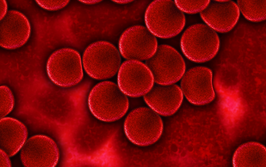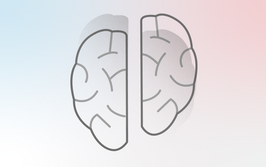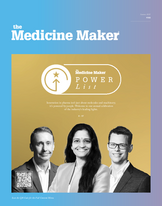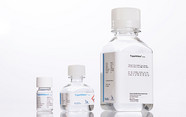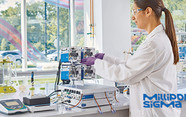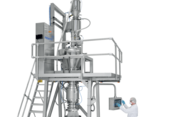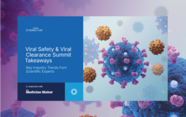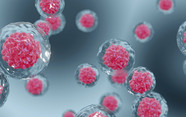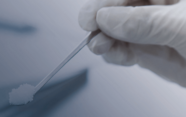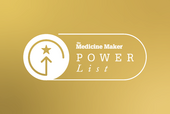The Golden Touch
Researchers move a step closer to improving the effectiveness of cancer drugs by “manufacturing” therapeutic compounds in-vivo using gold nanoparticle catalysts
For decades, scientists have been trying to figure out ways of reducing the toxic side effects of chemotherapy drugs. But what if patients could receive inactive chemical precursors along with a catalyst to produce therapeutic compounds at the site of the tumor?
The trouble is finding the right catalyst. According to researchers from the University of Edinburgh in Scotland, gold nanoparticles are a good prospect: they work at or even below room temperature, are recyclable, and harmless to human beings. Their application in biological systems, however, is hampered by their affinity for thiols – sulphur analogues of alcohols. The near covalent bond formed between gold and sulphur leads to the spontaneous self-assembly of monolayers at the surface of the catalyst, masking its catalytic properties.
Asier Unciti-Broceta, Reader in Innovative Therapeutics at Edinburgh, and co-author of a recent study (1), has been able to protect gold nanoparticles from thiols within a polymeric device – a PEG-grafted low-crosslinked polystyrene matrix – allowing gold to work as a catalyst even in the presence of serum proteins (which are rich in thiol groups).
“We have demonstrated the potential of our therapeutic device by manufacturing chemotherapy drugs in the presence of cancer cells,” says Unciti-Broceta. The nanoparticles have also been tested in a living system, with Unciti-Brocera and his co-authors demonstrating the locally-controlled release of a florescent dye in the brain of a zebrafish. “This opens up new avenues both in therapy and biomedicine, as we can now release drugs, probes or biomolecules in specific locations within the most complex and sensitive organ with spatiotemporal control,” says Unciti-Broceta.
The researchers are now working with neurosurgeons and urological surgeons to use gold implants in cancer treatment. “We are currently investigating a two-component strategy consisting of surgical implantation of gold devices inside locally-advanced cancers; for example, brain tumours, and then giving inactive starting materials that will be converted into active anti-cancer drugs after reacting with the gold inside the tumor,” he explains. “The chemotherapy drugs will be ‘catalytically’ generated just within the tumor, so the side effects of the chemotherapy in healthy organs will be minimal, and the treatment will last as long as the patient keeps taking the drug precursors.”
- AM Perez-Lopez et al., “Gold-triggered uncaging chemistry in living systems”, Angew Chem. Int. Ed. Engl., [Epub ahead of print] (2017). PMID: 28699691.

Over the course of my Biomedical Sciences degree it dawned on me that my goal of becoming a scientist didn’t quite mesh with my lack of affinity for lab work. Thinking on my decision to pursue biology rather than English at age 15 – despite an aptitude for the latter – I realized that science writing was a way to combine what I loved with what I was good at.
From there I set out to gather as much freelancing experience as I could, spending 2 years developing scientific content for International Innovation, before completing an MSc in Science Communication. After gaining invaluable experience in supporting the communications efforts of CERN and IN-PART, I joined Texere – where I am focused on producing consistently engaging, cutting-edge and innovative content for our specialist audiences around the world.



